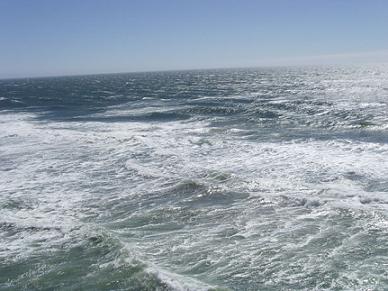Ancient Oceans Invite You to Heal
In the various ancient oceans of the world, we find that there are plenty of natural swimmers that still appear in these open waters. This creatures glide through the waters with ease and offer some fascinating underwater beauty that most people aren’t aware of. As the world changes, so does the ocean life and the creatures that continue to thrive and evolve in the waters.
Of course, the benefits of these ancient oceans go beyond what the life in them experience. It is increasingly popular for people to make treks out to these waters for some of the health benefits that they can find. Many people will find natural healing such as that skin conditions, emotional problems, immune system concerns and even arthritis can be improved by sitting in these waters.
With the growing popularity, the summer Olympics have even turned to these waters to hold many open water races. This gives the athletes some free reign to glide through the water and to test their limits.

There were fourteen ancient oceans you should be aware of that once existed. These oceans had plenty of natural swimmers in them and are in areas where they remained fairly accessible. Here is a look at where they once were located.
- Bridge River Ocean – Found between North America and Insular islands.
- Iapetus Ocean –Located between Avalonia and Baltica.
- Panthalassa – Once surrounded Pangea.
- Rheic Ocean – A former Paleozoic ocean.
- Slide Mountain Ocean – Found between Intermontane Islands and present North America.
- Tethys Ocean – Once was located between Laurasia and Gondwana
- Khanty Ocean – Located by Siberia and Baltica.
- Mirovia – The surrounding ocean of the Rodinia supercontinent.
- Paleo-Tethys Ocean – Was formed around the Hunic terranes.
- Poseidon Ocean – This ocean is one that existed back in the Mesoproterozoic period.
- Proto-Tethys Ocean – As Pannotia disintegrated this ocean was formed.
- Pan African Ocean – This ocean was once found surrounding Pannotia.
- Superocean – This is the ocean that once wrapped around the global supercontinent.
- Ural Ocean – This ocean was once located near Baltica and Siberia.
Those looking to understand more about these open waters need to understand that they also serve quite a few functions. In fact, many people don’t realize that the oceans are responsible for the weather and temperatures we experience.
Since about 70% of the surface of the Earth is covered by these oceans, you can begin to understand their significance. When the sun’s radiation touches the waters, they begin to absorb this radiation and this is then transformed into heat energy. Under the open waters in the ancient oceans and other areas, the currents move this energy and help to distribute the heat across the globe. This means that a level of warming takes place for both the earth as well as the air.
Considering that 90% of all the water on the Earth is in the ocean, you can get a better grasp of just how much an impact this will have on the climate and the importance of these waters. Something you might find additionally interesting is that all the oceans are connected to each other. However, it wasn’t until 2000 that some of these oceans were fully recognized. In fact, for quite some time only the Arctic, Indian, Atlantic and Pacific oceans were recognized. Since the Spring of 2000, the Southern Ocean was introduced along Antarctica.
Of course, while the ancient oceans have been blended into the larger bodies of water, many of the smaller seas are still being recognized. These are areas of the ocean that offer smaller bodies of water that are usually enclosed by some form of land. The most commonly acknowledged seas are the Caribbean, Mediterranean and South China seas. However, there are quite a few others that can be found across the globe.
The oceans of the world are fascinating and filled with quite a bit of history. It is important that we take the time to understand these open waters and take a look at all the benefits of historical pieces of information these bodies of water can offer. After all, they are a part of our history and can offer a wealth of entertainment and knowledge.
Today's Daily Swim Workout:
Warm-up: 500 freestyle, 100 breaststroke pull, 200 Individual Medley, 100 kick butterfly-on-back, 100 freestyle
10 x 50 alternating backstroke and freestyle
6 x 100 as 25 kick IM order per 100 no freestyle, 75 freestyle, repeat
Hand-paddles on: Pull 4 x 200 alternating breaststroke and freestyle
10 x 50 with fins alternating backstroke and freestyle
Warm-down: 200 freestyle
Total: 3600 meters or yards depending on pool length
back to the top of ancient oceans page
from ancient oceans page to open water page








